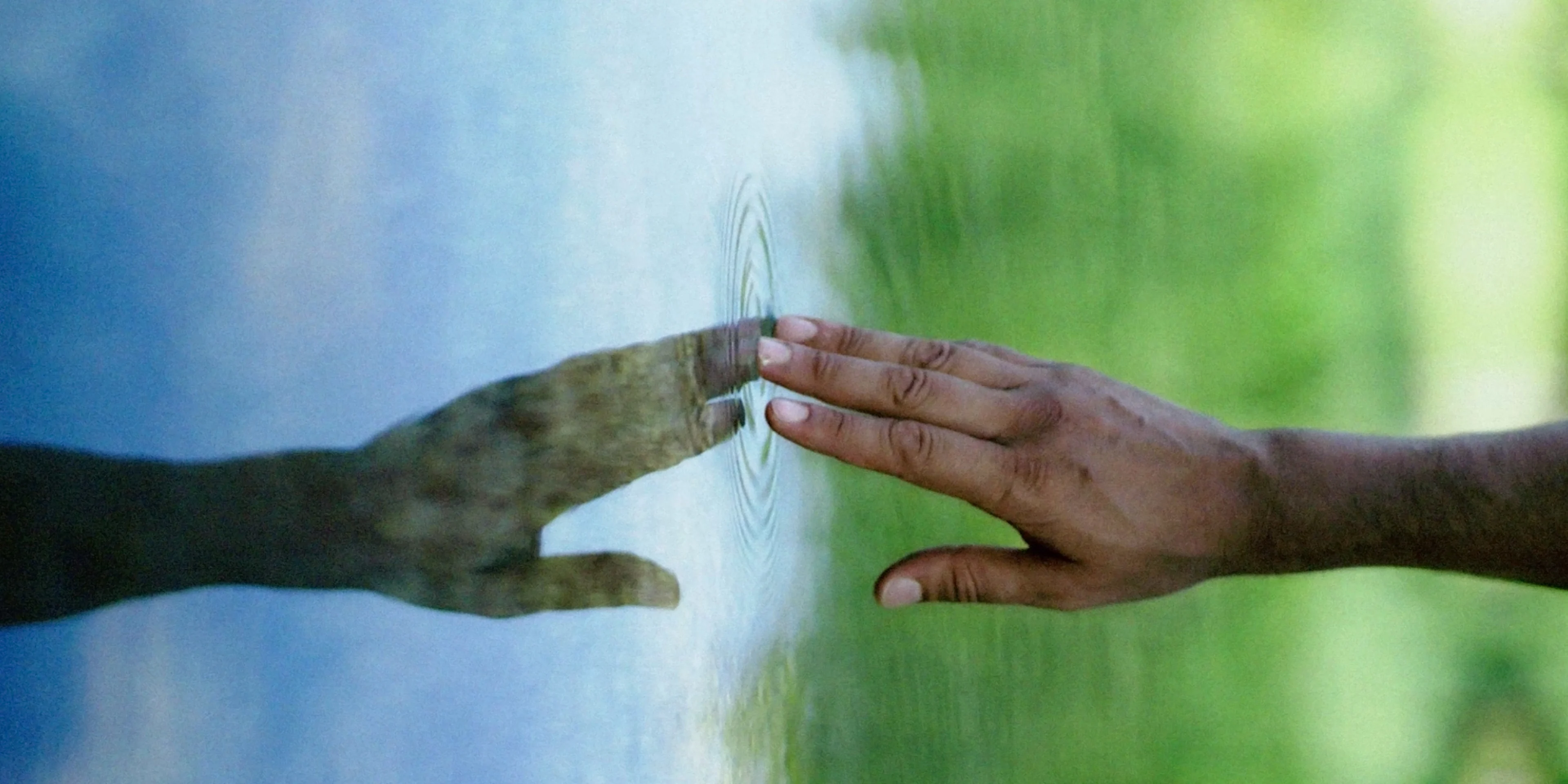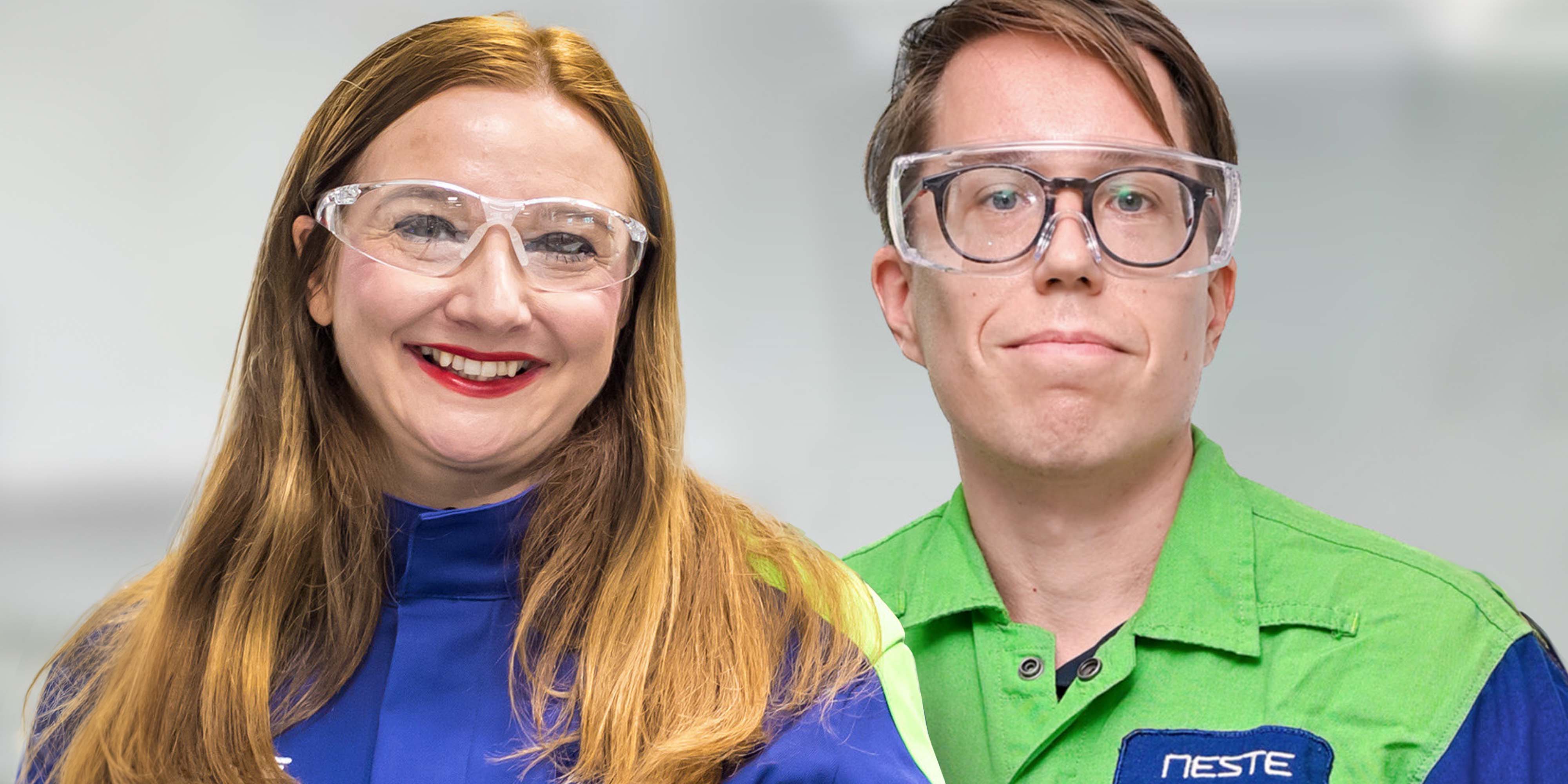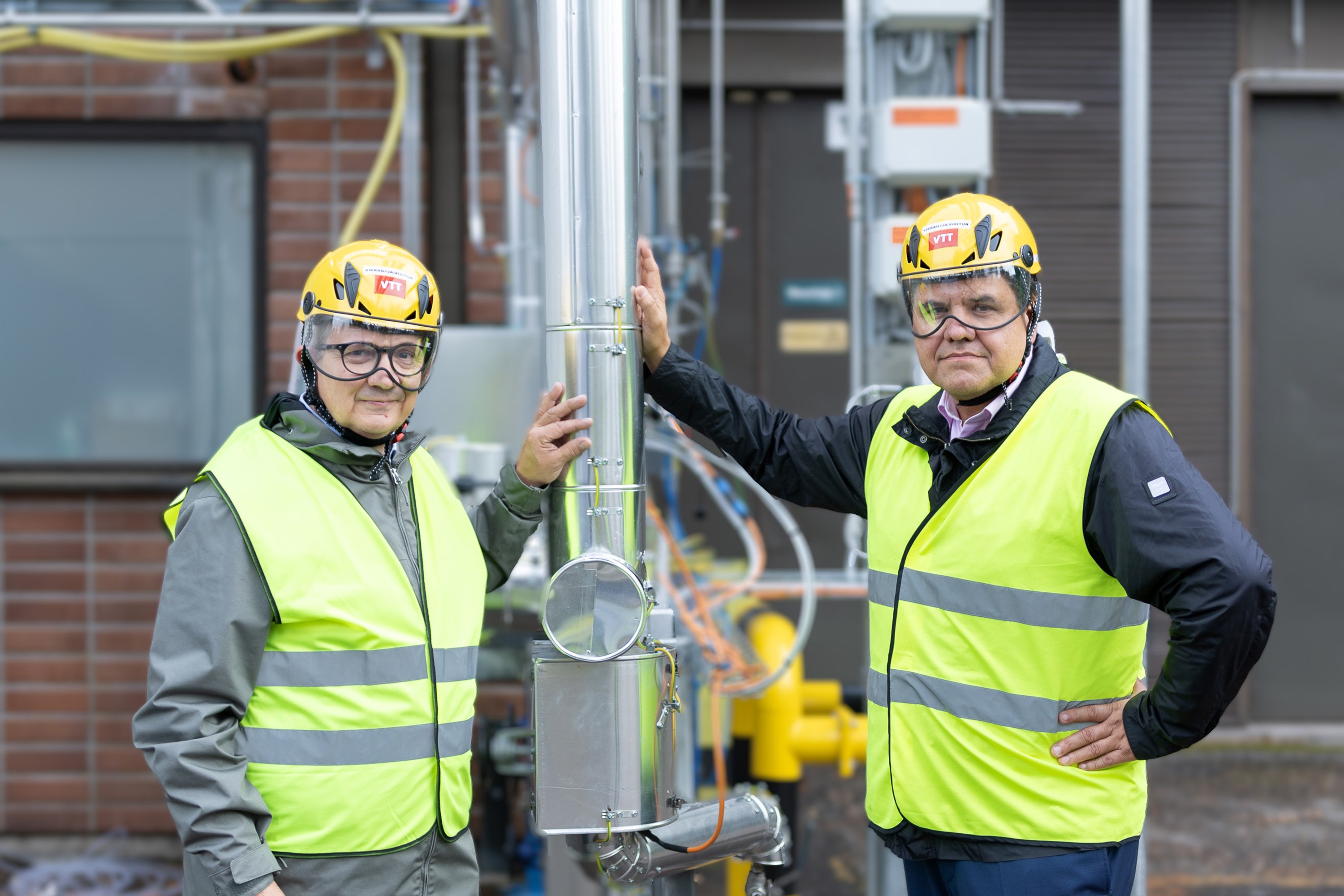
Innovation
11 minute read
Using design fiction to imagine a preferable future
The future does not yet exist therefore we must imagine it. Heather Snyder Quinn (MFA), Assistant Professor of Design and Wicklander Fellow in Ethics at DePaul University’s College of Computing and Digital Media (Chicago, USA), is a design fiction expert. She works with Fortune 500 companies and communities across the globe who seek to integrate futures-thinking to understand the possible impacts of design and technology. Recently, she engaged with Neste’s innovation team on a design fiction initiative to imagine Neste’s role in creating preferable futures for all.
Design fiction provokes imagination and innovation by asking the question “what if?” What if there would be no waste, and instead, material streams to be reused again, and again – and again? Watch the short film that highlights the possibilities of tomorrow.
As we move from the industrial age to the information age and into the age of experience, we live with great uncertainty about our collective futures. Moreover, the global pandemic has further amplified the significant issues of our time, from big tech's pervasiveness and unchecked power to the rising costs of healthcare, increasing wealth inequality, climate change, and beyond.
More and more, the public demands a clear understanding of the impact of their choices and a consensual voice in building their collective futures. As stated by Dr. Lesley-Ann Noel in her keynote titled Design Thinking and Speculative Futures during Black History Month at DePaul University and IIT, "Why are we waiting for the future? How do we bring the future to the present? Design can create a framework to tell people it's ok to think differently."Design fiction is becoming a powerful tool for artists, designers, companies, and communities to reimagine the past, present, and future or visualize futures that were previously missing.
According to author Bruce Sterling, “design fiction moves forward innovation perspectives by suspending disbelief about change.” It makes scenarios real enough to feel possible, inspiring dialogue, interaction, and even policy changes.
Making the audience feel unsettled
None of this can happen without creating a strong provocation, a “what-if scenario” that makes the audience feel unsettled in some way. Typically, there are three requirements for a provocation to lead audiences towards understanding possible societal change:
1. The design fiction itself (a designed artifact/object—in this case the fictional synthetic material)
2. A strong narrative story (written, audio, or video—the voice over story about what’s preferable)
3. Clear context (it is clearly a different time/world/place than where we are now)
Over the years, I’ve used many techniques, methods and innovative experiments, but I’ve never used a tool as exciting and powerful as design fiction. While initially it sounds radical, it’s completely familiar, because everything that exists today was at one point just an idea or a figment of imagination until someone came along and made it real.
There is a difference between a design (prototype) and a design fiction. For one, there are no logical constraints on the artifact itself, and it's part of a greater narrative story that is set in another time (usually the future). Placing the artifact within a palpable context makes us believe “this could be real,” enabling us to then converse and try to understand its impact on society and the earth. It isn’t just a prototype waiting for implementation, or sitting in a powerpoint deck (although it can be). Enticing narrative power is why design fiction and speculative design are already in use today by innovation giants such as Tesla, Google, and Apple, among others. These companies are not limited by what is or isn’t possible. Because of that mindset, we hold magic in our hands in the form of the smartphone, for better and for worse. However, it is easy to forget that such a device was once deemed impossible—something only imagined in a science fiction novel, or film.
Designers are the new inventors. When they work in tandem with scientists, entrepreneurs, business strategists and even entire communities, the collective power is immense, allowing us to imagine the futures we need and desire. It is without boundaries, and even revolutionary. Anything is possible, even magic. British science fiction writer Arthur C. Clarke, author of Profiles of the Future: An Inquiry into the Limits of the Possible, is known for his famous 3 laws but perhaps most notably the third: “Any sufficiently advanced technology is indistinguishable from magic.”
This magic makes us optimistic about the future even when the world is in crisis. However, it’s because the world is in crisis that businesses can no longer run as they always have. The world is insisting that companies pave the way towards a preferable future, and one that is sustainable, equitable, and just for all. Unfortunately, few have made that leap forward. They continue to do more of the same, which, according to Perttu Koskinen, Neste’s VP of Innovation, Discovery and External Collaboration, is actually setting us backwards. And there is no time to waste.

The power of possibility
When I spoke with Koskinen, I felt great relief and a great deal of hope. We had a lot in common, from time spent in academia, to a desire to put theory into practice in applied work in industry, he in sciences and myself in art and design. But more so we are both optimists and believe in the power of possibility. "Innovation is at the heart of Neste. Our innovation teams continuously explore new raw materials and globally scalable solutions in the bio and circular economy and test their viability for industrial scale production,” Koskinen says.
"Our innovation teams continuously explore globally scalable solutions in the bio and circular economy."
In recent years, my engagements on both academic and industry projects have been filled with tech dystopia, and perhaps rightly so, but the typical dystopian view has made us forget about the power of technological innovation for saving lives and also our planet. I'm not talking about a utopia, which is the other extreme, but I agree with Koskinen that we can’t go backwards in our standards of living and why would we? According to Koskinen we don’t have to. This was the first time I heard a balanced view on approaching climate futures. It was realistic and attainable. It was not all-or-nothing, and because of this I believed him, and I wanted to know more. “Science can help us. The standard of living is increasing around the globe and that is how it should be. We need to find the ways, the technologies, the solutions, to continue to increase standard of living and well-being around the globe in a sustainable manner. Instead of having a single use, linear economy, we have a circular economy where we utilize more renewable raw materials and importantly re-use materials again and again and again. This is possible for the world, and it is full of great business opportunities,” he says.
Planet-centered design
I’ve worked with some of the biggest companies in the world. Innovation is part of their DNA, and as such, they have always been essentially designing the future. We have come to expect radical innovation from the tech pioneers of Silicon Valley. They are fearless in their pursuits, and anything and everything is possible while not always ethical or even desired.
"They are fearless in their pursuits, and anything and everything is possible while not always ethical or even desired"
But this is where Neste is different and sets a more powerful example for other companies to follow. Neste is not interested in creating everything. They are tremendously thoughtful in their innovation. So while they believe anything is possible, they simultaneously believe that not everything is preferable. “The circular economy is a key enabler in solving the climate crisis. The current single-use, linear economy is inefficient because most of the material is wasted as less than 10% of material extracted is re-used. Both the extraction and disposal of materials create greenhouse gas emissions. Whereas in the circular economy materials are re-used resulting in greater efficiency and greenhouse gas savings,” says Koskinen.

"What gives me hope is that the bio and circular economy is full of great business opportunities for companies."
“What gives me hope is that the bio and circular economy is full of great business opportunities for companies. But we just need to be fast in this transition on a global scale. This means that we need to utilize the existing sustainable solutions to the maximum and keep persistently developing new, more efficient, solutions as well.”The imperfect circle represents many things, as showcased through fict
ional, visual artifacts in the Neste Film. We begin with atoms and molecules, which are the building blocks of materiality, and move towards themes of rotation and progress, the nest, the home, and of course, the earth and the circular economy. The imperfect circle is the conceptual core of Neste’s design fiction and represents our path towards a preferable future.“I think it is also important that when you are moving forward and developing new technologies that you realize you don’t always have the best technology immediately. If you try to develop the perfect solution, it might take too much time, and with the climate crisis, there is no time to waste,” says Koskinen. “We need to move step-by-step, and a good example of this is biofuels. We can start producing biofuels from easy raw materials, sugars, and vegetable oils and gradually utilize more difficult waste and residue raw materials; first waste oils and fats, like used cooking oils or waste animal fats, and then straw, forest harvesting residues and municipal solid waste. We need to learn how to walk before we can run.”
Neste is setting the bar high, which is right where it should be, and they are paving the way for other companies to follow suit by considering the power they have to create the future one step at a time. It is a proactive approach, not singularly lensed. It is inclusive. The small daily steps on Neste’s part, are moving towards a vision that is set in the far future, and it's quite important to put time in context. Take augmented reality (AR), for example, first imagined as early as the early 1900’s and perhaps officially invented in 1968 by Harvard professor Ivan Sutherland, it took many “failed” attempts, and several prototypes before it became part of the fabric of our lives. Over 100 years ago when it was first imagined, it was deemed impossible, but now today it exists, because of a radical idea, and a series of small steps over many years. Today, AR is a technology present on almost everyone’s smartphone, utilized for navigation, communication and even in hospitals for surgical training. From fantastical to reality in just 100 years. In terms of the earth’s lifespan, 100 years is really not a very long time.“The scale of using fossil resources for energy, transportation, chemicals, and materials is so huge it is impossible to imagine. To replace these, we have to use all the sustainable solutions available now and in the future. Importantly, we need to act now in solving the climate crisis. As the scale is enormous and global, there will be the need and plenty of room for all sustainable technologies and solutions,“ says Koskinen.
"As a mother of two daughters, much of what I do in life is for their future"
As a design fiction scholar and artist, I create stories and fictional designs about fantastical ideas, whether teleportation, invisibility cloaks, time travel, or the ability to breathe underwater. I write my stories, and then I research the technology. I often expect to find the impossible, and yet in every example listed above, I’ve found that on some small scale, it's already been done, and this is exactly what Koskinen is talking about. There is no time to waste and we have to embrace possibilities now.
Embracing the imperfect circle
As a mother of two daughters, much of what I do in life is for their future. In my work, especially in the provocations I imagine through design, I do it because I want to see the possibilities for them. I want to ensure their future, and their children’s future.If we are to solve the great issues of our time, we can’t keep doing the same things and expecting different results. Design fiction and futures-thinking is necessary to rethink the systems and structures that exist and continue to improve quality of life in a sustainable manner.There is no time for all-or-nothing thinking or perfectionism. We can ask ourselves “what if we can recycle and reuse 90% of the materials extracted?” It turns out it is not magic after all. It is possible, and it is also preferable. In fact, it is absolutely essential to ensure futures for all, and thanks to design fiction we can imagine it and eventually, make it happen.
Credits:
Heather Snyder Quinn, (MFA), Assistant Professor of Design and Wicklander Fellow in Ethics at DePaul University’s College of Computing and Digital Media (Chicago, USA).




